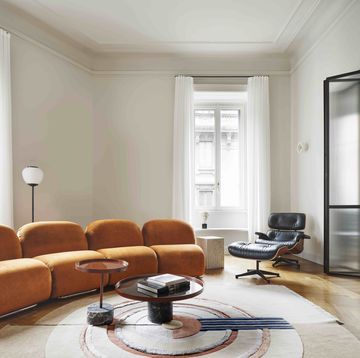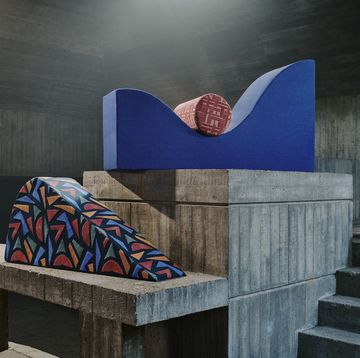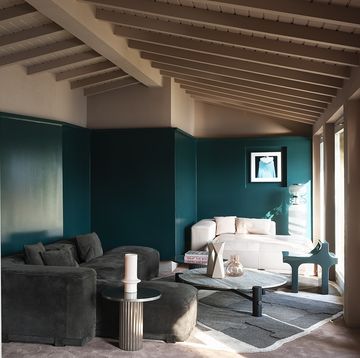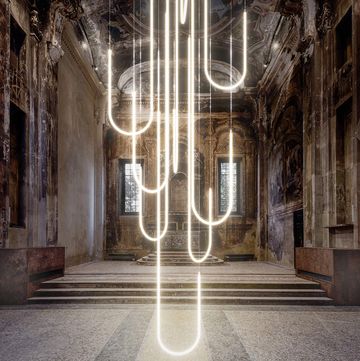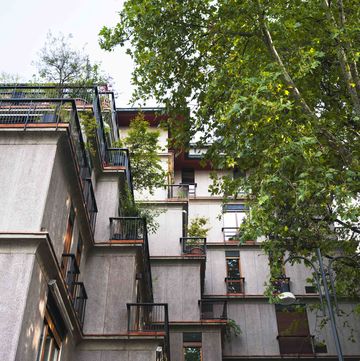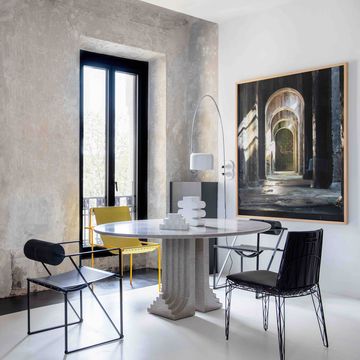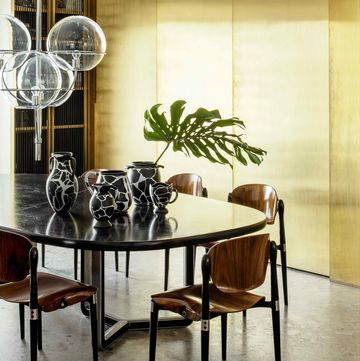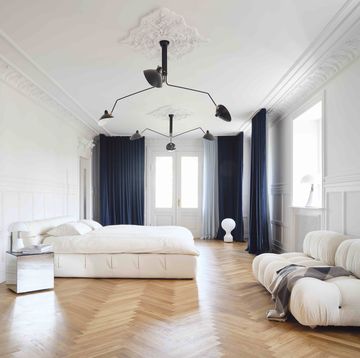‘I cannot be Postmodern,’ declared Italian architect Aldo Rossi (1931–1997), ‘for I have never been Modern.’ His semantic grievance has done little to suppress a legacy as one of the movement’s most radical thinkers, who helped spark it into being in the second half of the 20th century.
His extension of the San Cataldo Cemetery just outside Modena, designed in 1971 as he recuperated after a car crash, retains an air of mystery fuelled in part by his evocative descriptor: it was a ‘city of the dead’. With rationalist apertures but no roof, windows or doors, the cubic ossuary is at once faintly classical and alarmingly surreal. By all accounts – bar his own – this symbolic city was an early harbinger of postmodernism. With it arrived a new way of thinking.
Rossi studied architecture at the Polytechnic University of his Milan hometown, where he would return to teach in the mid 1960s. As Italy’s industrial centre, the city suffered heavy wartime bombing, and the loss of historic buildings and factories had altered its very fabric.
With destruction came renewal, and though modernism hadn’t yet lost its lustre, post-war Milan was a playground for innovation. Upon graduating in 1959, Rossi became one of the editors of Casabella magazine and opened his own office.
The architectural critic Ada Louise Huxtable would later describe him as ‘a poet who happens to be an architect’. It’s a sentiment that evokes serendipity, yet few thought so thoroughly about architectural responsibility as Rossi.
His 1966 text The Architecture of the City is a trailblazing treatise on urban design, which stresses the historic weight of the public realm. A city is ‘a collective memory of its people’, he reasoned, and thus ‘one cannot make architecture without studying the condition of life in the city’.
Commissions across Italy and a number of prestigious teaching posts in the 1970s culminated in his creation of the famous floating Teatro del Mondo, while the decade that followed saw Rossi turn prolific product designer. Four of his most famous designs from the period – the ‘Parigi’ chair, ‘Consiglio’ table, ‘Cartesio’ bookcase and ‘Museo’ chair – are reissued by UniFor this month.
In 1990 he became the first Italian to be awarded the Pritzker Prize, when the jury assessed his work as ‘refreshingly simple in appearance but extremely complex in content and meaning’.
Much loved are his expressive drawings. Colourful and imbued with life, they seem to say more about the spirit of a building than any plan for its fabrication.




